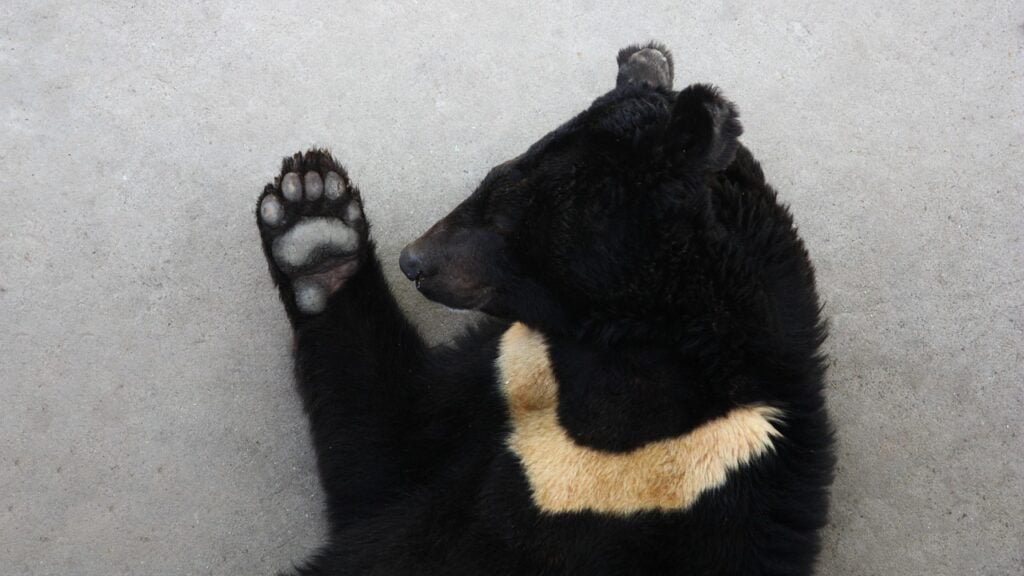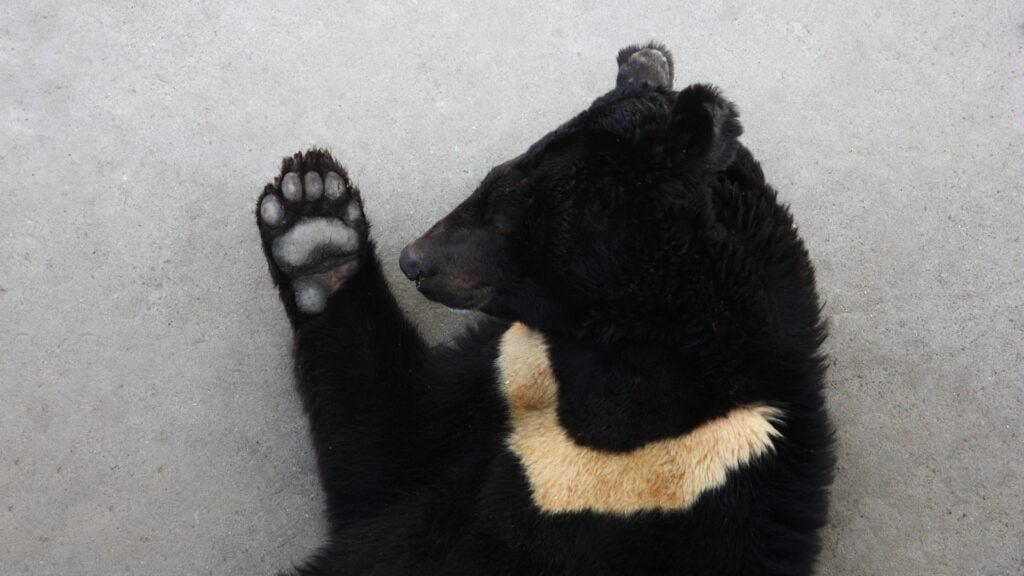Introduction to the Asian Black Bear
The Asian Black Bear, known scientifically as Ursus thibetanus, stands as a testament to nature’s adaptability. This medium-sized bear species, recognized by its lustrous black coat and distinctive white chest mark, is native to Asia’s varied landscapes. From the rugged Himalayas to the verdant forests of Japan’s Honshū and Shikoku Islands, the Asian Black Bear has carved a niche for itself, demonstrating remarkable arboreal capabilities.
Table of Contents
Physical Characteristics, Black bears with White on the Chest
Distinguished by their ebony fur contrasted with a light brown muzzle, these bears boast a white or creamy chest patch that often forms a V-shape. Their bell-shaped ears, longer than those of their ursine cousins, and short tails add to their unique profile. An adult Asian Black Bear stands 70–100 cm at the shoulder and measures 120–190 cm in length. Males typically weigh between 60–200 kg, with females being lighter, ranging from 40–125 kg.

Comparative Anatomy and Physiology
While visually similar to the brown bear, the Asian Black Bear is generally smaller and possesses a more mobile lip and nose structure. The skull, though compact, is robust, especially the lower jaw. This bear’s muscular build, particularly in the upper body, is crucial for climbing, while its shorter hind legs are less powerful compared to other bear species. Notably, despite this, an injured Asian Black Bear can still climb efficiently, a testament to its evolutionary adaptation to life amongst the trees.
The forelimb claws of the Asian Black Bear, used for climbing and digging, are longer and more hooked than those of the American Black Bear, reflecting their arboreal lifestyle. Interestingly, Asian Black Bears are highly adept at bipedal locomotion, capable of walking upright for significant distances.
Conservation Status
Listed as vulnerable by the IUCN Red List, the Asian Black Bear faces threats from habitat loss due to deforestation and poaching. Their body parts are unfortunately sought after for use in traditional medicine, adding to their plight.
Taxonomy and Evolutionary History
Ancestral and Sister Taxa
Asian Black Bears are pivotal in understanding the evolutionary trajectory of arboreal adaptations among bears. Their karyotypes are nearly identical to other ursine bears, indicating a close genetic relationship within the genus Ursus. They represent one of the more ancient lineages, with some theories suggesting they are descendants of Ursus etruscus or a larger variant of the extinct Ursus minimus.
Phylogenetic Relationships
These bears share a common European ancestor with American Black Bears, diverging approximately 3 million years ago. Despite the close relationship, the exact phylogenetic branching between the Asian Black Bears, American Black Bears, and Sloth Bears remains a subject of ongoing research.
Conservation Efforts and Future Outlook
To ensure the survival of the Asian Black Bear, conservation efforts must be multifaceted. Protection of their natural habitats, stringent enforcement against poaching, and a global shift in perception regarding the use of bear parts in traditional medicine are imperative.
The future of the Asian Black Bear depends on our ability to understand and mitigate the complex challenges they face. It’s a race against time to protect these remarkable creatures and the diverse ecosystems they inhabit.
Conclusion
The Asian Black Bear is more than just a species; it is a living symbol of Asia’s rich natural heritage and the intricate balance of its ecosystems. As stewards of the earth, it is our collective responsibility to ensure that future generations will continue to witness the marvel of the Asian Black Bear in its natural habitat, roaming free and wild.

